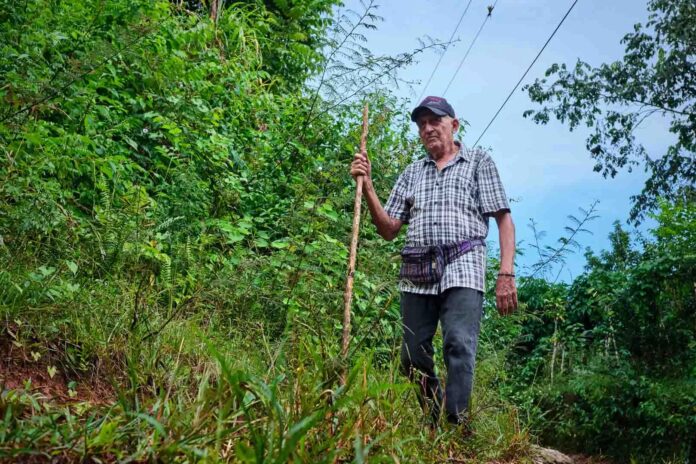
Photos and Text by Nester Nuñez (Joven Cuba)
HAVANA TIMES – We were supposed to reach Pico San Juan, the highest point of the Escambray mountain range, but the plan was delayed and we didn’t make it.
We wanted to climb for the exercise itself, to test our bodies and our will, for the vain achievement—one that inflates the ego—of feeling like the most elevated people for miles around at that moment; and also because climbing hills brings people together, and because Silverio, the organizer, the leader, the promoter of the initiative, was turning 76 the next day, and it was his wish to celebrate in a grand way.
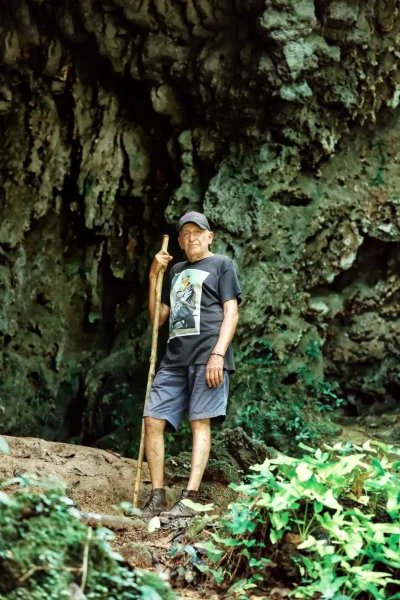
The Silverio I’m talking about is Ramón, whom I would often see walking through the cobblestones of Santa Clara or among the benches and graffiti-covered bricks of El Mejunje, enjoying a concert by La Trovuntivitis, or a drag show, organizing festivals, doing theater, and countless other things—but never climbing hills in the mountains. When I expressed my concern to Orlandito, he replied, “You’re crazy. Silverio climbed El Turquino to celebrate his 70th birthday. For him, this is a piece of cake.”
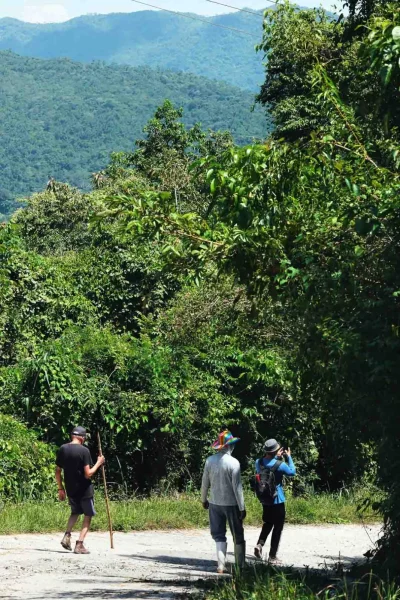
Orlandito knows what he’s talking about because he has been very close to Silverio for nearly three decades, managing the Tacones Lejanos Bar since the days when there weren’t so many imported beer brands or the current “Yomempingo,” but rather the homemade guarfarina distilled in homes in the late ’90s and the artisanal wines made from red mangrove, rice, or plantain that were common in Santa Clara. Although Orlandito no longer drinks, he carried two bottles of whiskey in his backpack, which he ended up offering in toasts and thanks to every farmer we met along the trails. He was also the first to jump into the river pools and walked much of the time alongside Silverio, like a son paying attention to his father.
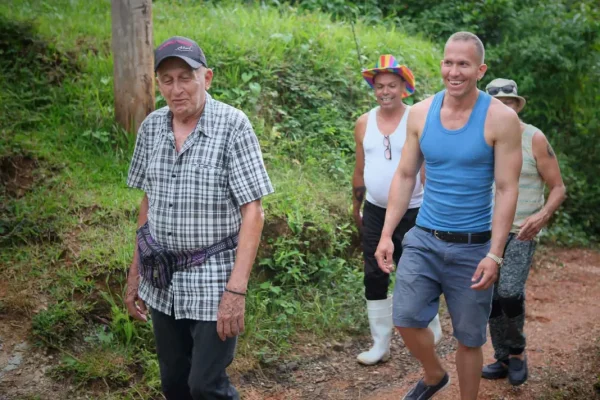
It wasn’t that Silverio needed much help because his step is firm, rhythmic, and his breathing hardly shows any effort. He walks as he speaks: slowly. More than because of his age, I suppose it’s because he is at peace with himself, aware of the good he has done during the 40 years of El Mejunje and his previous profession as a teacher.
Though his plaid shirt might make him look like a disgraced bureaucrat, dethroned and thrown into the fields of oblivion, nothing could be further from the truth: he is successful in what he does, loved, admired, and makes things work. Moreover, he has many of the qualities we would wish to see in an administrator, a public official, or a decent politician.
“I believe success lies in knowing when you’ve made a mistake, not saying ‘I am the wisest,’ or anything like that. People sometimes tell me things, thinking I’m not listening, but later I see that they were right, and that helps me. The other thing is acknowledging it: ‘Look, you told me that, and now we’re doing it.’”
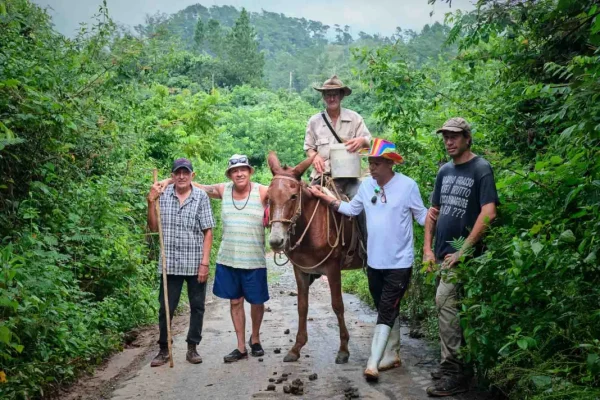
It’s the first night at the modest motel in Cuatro Vientos. We went to spend the blackout in his room and ended up receiving this leadership lesson. “Success also lies in giving people the opportunity, so they don’t say, ‘I’m misunderstood, I’m so good at this and that.’ Oh, sure, that’s fine, I’ll see if it’s true: Wednesday, there’s nothing here, this space is yours: go ahead. That way you take the weight off yourself, and that person will realize if they have the ability to do it or not.”
Carlitos is another member of the group. A bassist, rocker, with a slightly hunched back and a past that shows. He bathes in his pants at the Salto del Rocío, climbs first to the plum tree, and shakes it so the fruit falls and saves us time. From his own experience, he lets me see Silverio as both a paternal and demanding leader: “I’m a burned-out guy,” he says. “One day I made a proposal to him, and he said: “Go ahead”. And when he needs to scold you, he gives you the ‘bafle.’ But he gives you such a nice rebuke that you understand things, you get it, and if you don’t change, you’re ignorant and won’t succeed in whatever you’re doing.”
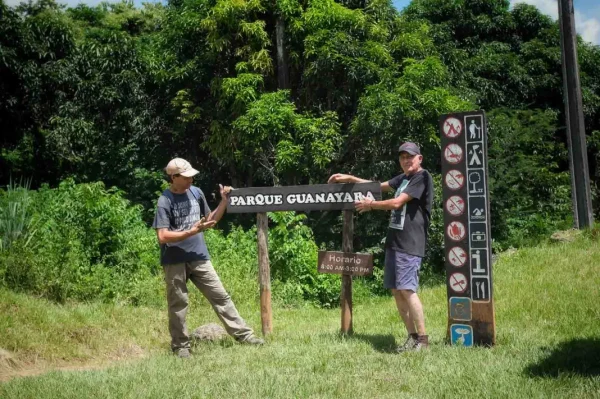
After stepping out to make a phone call for a few minutes, since the blackout almost blocked all coverage, Silverio returns and picks up the conversation right where he left off: “People tell me, ‘El Mejunje is not the same anymore.’ Of course, it can’t be the same: it’s the El Mejunje of now. Ask those who are here what El Mejunje means to them, what it brings to them. These young people who are coming in now have nothing to do with those from five years ago, and I can’t imagine what the ones entering five years from now will be like. They will have another rhythm, other concepts, another way of seeing life. I believe success also lies in moving forward in time, keeping the essence of the project, which is inclusion, and at the same time, ensuring it doesn’t stagnate, that it renews itself.”
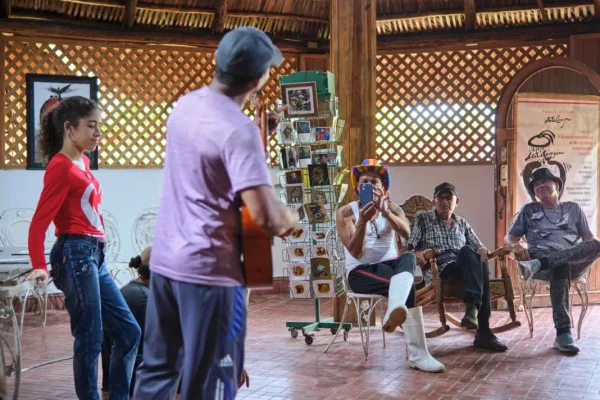
“Ghettos have never worked for me. On Saturdays, many heterosexuals go to the drag show. They sit, enjoy, and share, that’s how it is. Just like rockers go to the trova and gays go to the seniors’ space… All of this web was built, people joined, mixed, and something very plural was achieved. When you go to El Mejunje, you see diversity.”
To confirm that, Leo is with us, the lighting technician, a sensitive guy who went to Charco Azul to reconnect with his family’s past, moved and deported to Pinar del Río during the Escambray purge. He also traveled with the group Eliecer, a drag performer. His character’s name is Jennifer, he tells me, showing me photos he keeps on his phone. The glamour of the dress, wig, and sequins contrast sharply with the rubber boots he wore to climb mountains alongside everyone else. He talks about the big shows of the ’90s that made El Mejunje famous, even beyond Cuban borders.
“You had to be brave to present a drag show to the farmers, and now it’s what people ask for the most,” says Silverio. “What sense would it have made to celebrate the anti-homophobia day at El Mejunje, if the people who go there aren’t homophobic? It had to be taken to the streets, to the countryside… The point is to dare, take risks, that’s also where success comes from.”
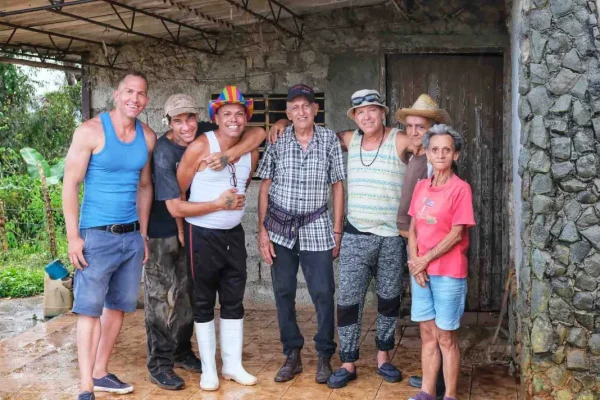
“I’ve said that the soul of the Cuban nation is in El Mejunje: bolero, filin, trova, not as something for a museum; they’re alive, they’re forming generations.” What I think, however, is that the soul of the nation embodied by El Mejunje goes beyond culture: it’s like the ideal Cuba, the participatory, inclusive Cuba, full of ideas, experiments, and results, that many of us aspire to. There, the problems are never ignored.
“Santa Clara for life” was a volunteer group that coordinated the reception and delivery of medicines to those affected by COVID-19. From El Mejunje, donations also went to Pinar del Río after the cyclone, to Matanzas after the supertanker fire, and to La Villa Panamericana after the Saratoga Hotel explosion. And they still coordinate meals for the elderly in vulnerable conditions, extremely needy. Silverio focuses on addressing the problem, without making a big fuss or being overly confrontational, without drawing attention to himself or his group, quietly, without scandals.
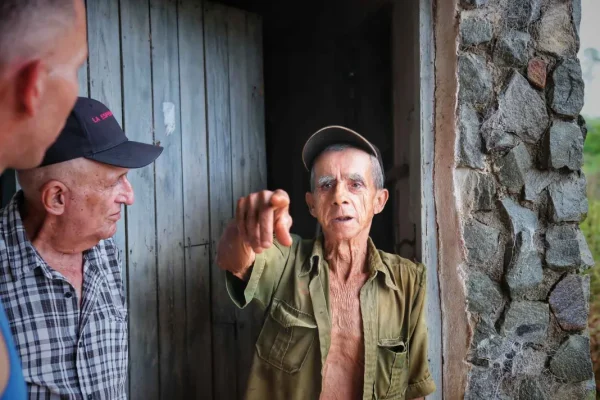
And just like on the Nengoa route, through Guanayara, or in his own room at the motel, Silverio listens to people. He likes to converse, to know honestly about the other person. It’s something he needs to do every once in a while because that’s what his roots as a farmer from La Minerva dictate—a place that no longer exists and was never even marked on municipal maps. That, and having a good time, away from the comforts and disagreements of daily life, feeling the smell of herbs and wet earth, filling his eyes with green and his ears with the songs of birds, was the simplest and truest reason for the trip.

We didn’t climb Pico San Juan on the planned day because we passed by the headquarters of Teatro de Los Elementos, a creative community built under the leadership of Jose Oriol, another essential founder, creator, and organizer who hasn’t lost his essence, his deep roots nourished by the lands of Escambray. There, under a ceiba tree, the ashes of actor Alexis Díaz de Villegas were laid to rest, and Silverio paid tribute to him. Songs and décimas were heard, the work of visual artist Nelson Domínguez was admired, and there was talk of joint projects between Teatro de Los Elementos and El Mejunje.
Seeing a couple of great old men dreaming and planning new ways to face the future made us feel truly at the highest point, without the need to climb any peaks. What this country needs is not to create more Mejunjes, but to multiply the leadership practices of people like Oriol and Silverio.
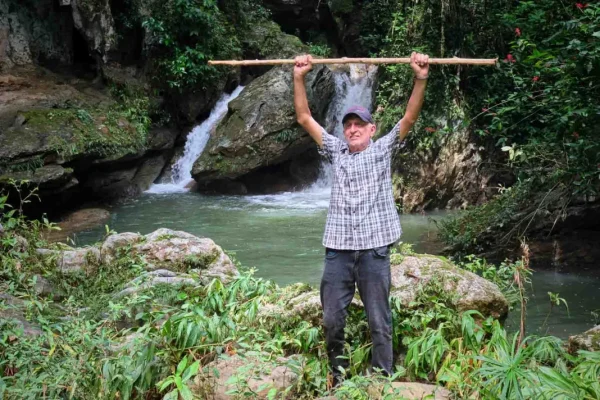
First published in Spanish by Joven Cuba and translated and posted in English by Havana Times.
See more from Cuba here on Havana Times.


